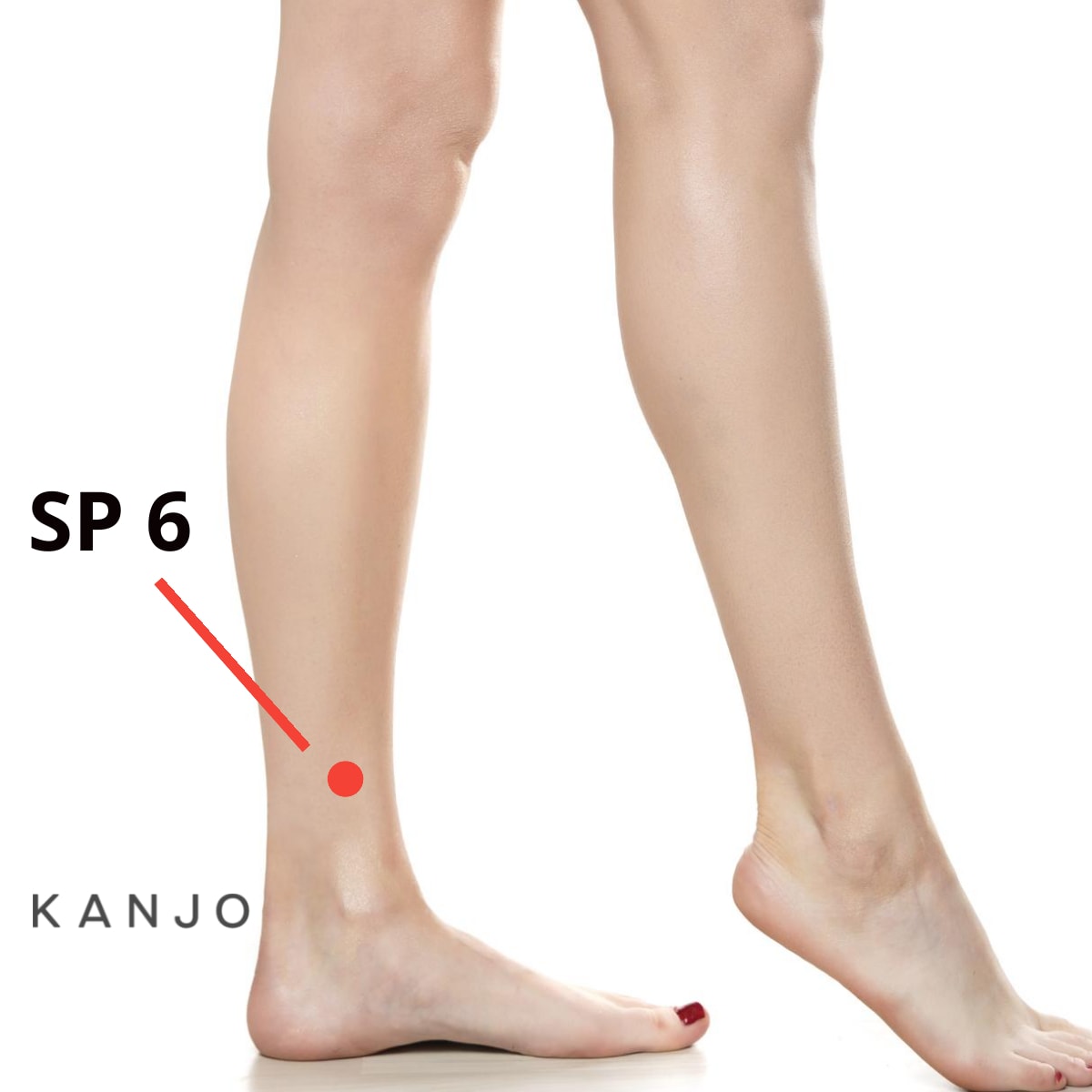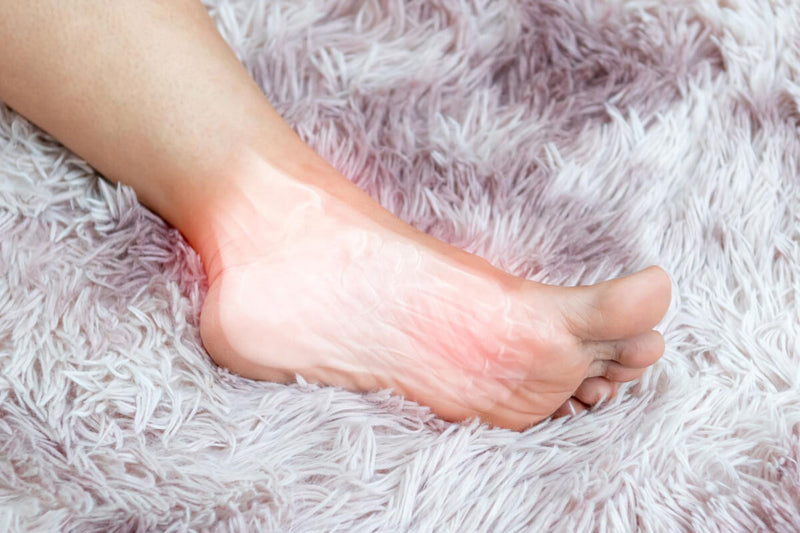Gout used to be known as the “ailment of kings”, but dealing with a gout attack isn’t likely to leave you feeling particularly great.
Gout is caused by excess uric acid in the blood. Crystals from the acid will form on the joints and cause extreme pain and swelling – usually in the big toe.
There are a number of risk factors for developing gout, and it can be managed in a variety of ways, including through lifestyle changes and medications.
While there is no cure for the condition, you can reduce the likelihood of gout attacks by adjusting what you eat and drink.
Some people with gout also find that acupressure at pressure points around the foot and ankle provides noticeable benefits, which is what we’re going to explore further in this article today!
What is Gout?

According to the CDC, gout is a type of inflammatory arthritis which can cause intense pain and swelling. It tends to affect the big toe, and usually only affects one side of the body.
Gout can get worse quite quickly, which is known as a ‘flare’. After a period of time, a gout flare will subside, and go into remission.
With treatment, the severity and frequency of flares can be reduced. These treatments are both medication and lifestyle-related.
If you think you have gout, you should see a doctor. A rheumatologist, in particular, is the type of doctor who specializes in treating gout.
What Causes Gout?
Gout is ultimately caused by a condition known as hyperuricemia, where there is too much uric acid in the body. This condition can also cause kidney stones.
When excess uric acid builds up in the body, it’s deposited as crystals in tissues, joints, and organs. These crystals are what cause the painful symptoms of gout.
You are more likely to develop gout if you:
- Are male
- Are obese
- Drink alcohol – the likelihood goes up with increased alcohol intake
- Ingest a lot of food or drink that is high in fructose
- Eat a diet that is high in purines. These are found in things like red meats, gravy, and some fish and shellfish
How to Treat Gout
At this stage there isn’t any definitive treatment for gout, although your doctor can prescribe medications which shorten the length of a flare. These include medications such as corticosteroids and other anti-inflammatories.
There are also plenty of lifestyle changes you can make which can reduce the number of gout flares, and make them less painful.
Diet Changes to Relieve Gout
If you are overweight or obese, losing weight will help to reduce how many gout flares you get. Aim for steady weight loss, with a balanced diet. It’s also best not to try high protein, low carbohydrate diets, like the Atkins Diet.
Reducing your alcohol intake or stopping drinking alcohol completely will also reduce the likelihood of attacks.
Additionally, since fructose is a trigger in many people, avoiding sodas and sugary drinks will help to reduce gout flares and lose weight.
Make sure you avoid eating foods that contain a lot of purines, which break down into uric acid. Red meat, deli meat, and shellfish are all high in purines.
Herbal Remedies for Gout
There are a number of herbs, such as turmeric, Devil’s Claw, and bromelain, which have anti-inflammatory effects and may help relieve gout symptoms.
Along with these, Vitamin C and Folic Acid have some evidence that they promote the breakdown of uric acid. This helps to prevent gout.
Over-the-Counter Medicine
Non-steroidal anti-inflammatories (NSAIDs) like ibuprofen are the best drugstore medications to take for pain during a gout flare.
This will both reduce the pain and swelling in the joint, and relieve fevers which can be associated with flare-ups.
Aspirin in particular is associated with increasing the risk of gout, so ask the pharmacist before you try something new to relieve your condition.
Acupressure for Gout Relief

Some people with gout find that alternative or traditional treatments can help relieve the symptoms like pain and swelling.
There are a few gout acupressure points that can be used to ease the pain. The six pressure points discussed below are the ones typically used by acupressure practitioners if someone is seeking relief from a gout flare.
If you are looking to prolong remission during the periods between flare-ups of gout, these points may also be helpful.
Since flare-ups are typically extremely painful, not all of these locations are suitable to put pressure on.
You should not feel anything agonizing, and if stimulating any of these points causes increased pain, you should avoid using it until your gout is in remission.
1. Kidney 1 (KD 1) – Yongquan or Gushing Spring

The KD 1 point is located on the bottom of your foot, around a third of the way from your toes down toward your heel, roughly in line with your second toe.
During a gout flare, you may find the release of pressure on this spot feels good enough that the discomfort of pressing on it is tolerable.
During remission, massaging this point can help break up the uric acid crystals in the joints which cause pain.
It is also a general relaxation point, and pressure can help promote a feeling of calm, as well as reduce nausea and dizziness.
2. Kidney 3 (KD 3) – Tai Xi or Supreme Stream

To find the KD 3 acupoint, place your fingers on the bone at the inside of your ankle. Then, slide your finger directly back towards your Achilles tendon.
The point is in the dip between the bone and the tendon. This point has special significance for gout, because regular or prolonged stimulation may assist in boosting kidney function.
Since uric acid is broken down in the kidneys, this point might prolong periods of remission.
Beyond this, the Supreme Stream point is associated with a number of benefits, including persistent cough and blurred vision. It is also another point which relieves nausea and dizziness.
3. Kidney 6 (KD 6) – Zhaohai or Shining Sea

The KD 6 point can be quite difficult to find, as it is located right under the tip of the ankle bone on the inside of your foot. If you’re suffering a gout flare, you may be unable to locate it due to swelling.
Like the Supreme Stream point, the Shining Sea pressure point may stimulate the kidneys, allowing them to better remove uric acid from food and drink.
4. Bladder 60 (B 60 or BL 60) – Kunlun or Kunlun Mountains

The B 60 is named after the Kunlun Mountain Range which runs through China and Tibet.
The pressure point is found in the dip between your outer ankle bone and Achilles tendon on the back of both legs – roughly on the other side of the tendon from the Kidney 3 (Supreme Stream) point.
Stimulating this point may help with gout symptoms, as it will relax the muscles and tendons of the foot, potentially reducing stiffness and swelling.
It can also help with lower back pain and dizziness. This point is also associated with inducing labor. So, if you are pregnant, it’s best not to use this pressure point.
5. Spleen 6 (SP 6) – Sanyinjiao or Fuliu or Returning Current

This acupressure point is located three inches above the inside of the ankle.
As gout doesn't often affect that far up the leg, this is one point which you might find you can tolerate being touched during a flare up of gout.
This point is especially associated with relaxation, so if you are in pain, this point can help assist you in sleeping better and feeling less anxious.
It may also reduce stomach cramps and abdominal swelling through stimulating the parasympathetic nervous system.
This is a system of nerves which helps run life-sustaining processes, like digestion, during times when you feel safe and relaxed.
6. Liver 3 (LV 3) - Taichong or Great Surge

The Liver 3 points are located on the top of each foot. It sits between the big toe and the second toe, just below the knuckle.
Stimulating this pressure point may help break up the uric acid crystals in the big toe joint.
However, if you are suffering from an acute gout flare, touching this point may be extremely painful. It is best to wait until you are in remission.
This point can also help with leg pain, swelling around the stomach, nausea, and headaches.
Gout FAQs

What Are the First Signs of Having Gout?
The first sign of gout is usually a painful flare, most commonly affecting one or both joints in the big toe.
As well as the pain, the joint may also be swollen, hot to the touch, and the skin around the joint will be red and shiny.
These attacks tend to occur at night, and can appear very suddenly.
How Can Gout Go Away?
The symptoms of gout flare up for a period of time, and then subside, in what is called remission. Remission can last for months, so it might seem like the gout has gone away for good.
Unfortunately, once the underlying cause of gout is there – sharp crystals in the joint from too much uric acid in the body – it doesn’t go away.
You can reduce the number of flares and their severity by losing weight, reducing alcohol intake, and avoiding foods like organ meat and shellfish.
Breaking up some of the crystals through massage and acupressure may also reduce flare-ups or make them less severe.
Seeing a rheumatologist is a key part of reducing the pain that gout can cause. As well as offering lifestyle changes to ease your gout, the specialist can also offer treatments for both reducing the incidence of acute flares and to prolong remission.
What Drink Gets Rid of Gout?
While there is no drink which gets rid of gout, there is some evidence that unsweetened cherry juice can reduce gout flares. But, there may be some natural sweetness in the juice, so there is still a possibility that your gout can be triggered.
A glass of skim milk every day may also help to reduce the amount of uric acid in the body over time.
Drinking plenty of water will help reduce the buildup of uric acid crystals in your joints.
Will Gout Go Away Without Seeing a Doctor?
Gout has a tendency to flare up and subside, making it feel like the gout has disappeared. But the gout will not just disappear because of the underlying causes.
Minor flares can be managed with over the counter medicines like ibuprofen and other NSAIDS, as well as rest.
However, you should always seek medical advice when you first experience the symptoms of gout. A rheumatologist can give you personalized advice on how to change your lifestyle to limit flares.
It is also important to see a doctor because hyperuricemia, which is the underlying condition that causes gout, causes other health problems.
If gout is left untreated, then there is a high probability of permanent damage to the affected joint. The gout will also be likely to affect more joints.
This is particularly the case if you are having several gout flares every year, or if your flares last for several weeks at a time.
Does Soaking in Hot Water Help Gout?
During a gout flare, the affected joint usually feels very hot so soaking your foot in hot water will not help gout.
This means that during a gout attack, keeping the joint cool with ice packs or a cloth soaked in cold water is more helpful than soaking in hot water.

Thank you for this article it was very very helpful as my husband is suffering from Gout and I pressed the mentioned points and it relieved his pain very much. Grateful 🙏🏻 to you.